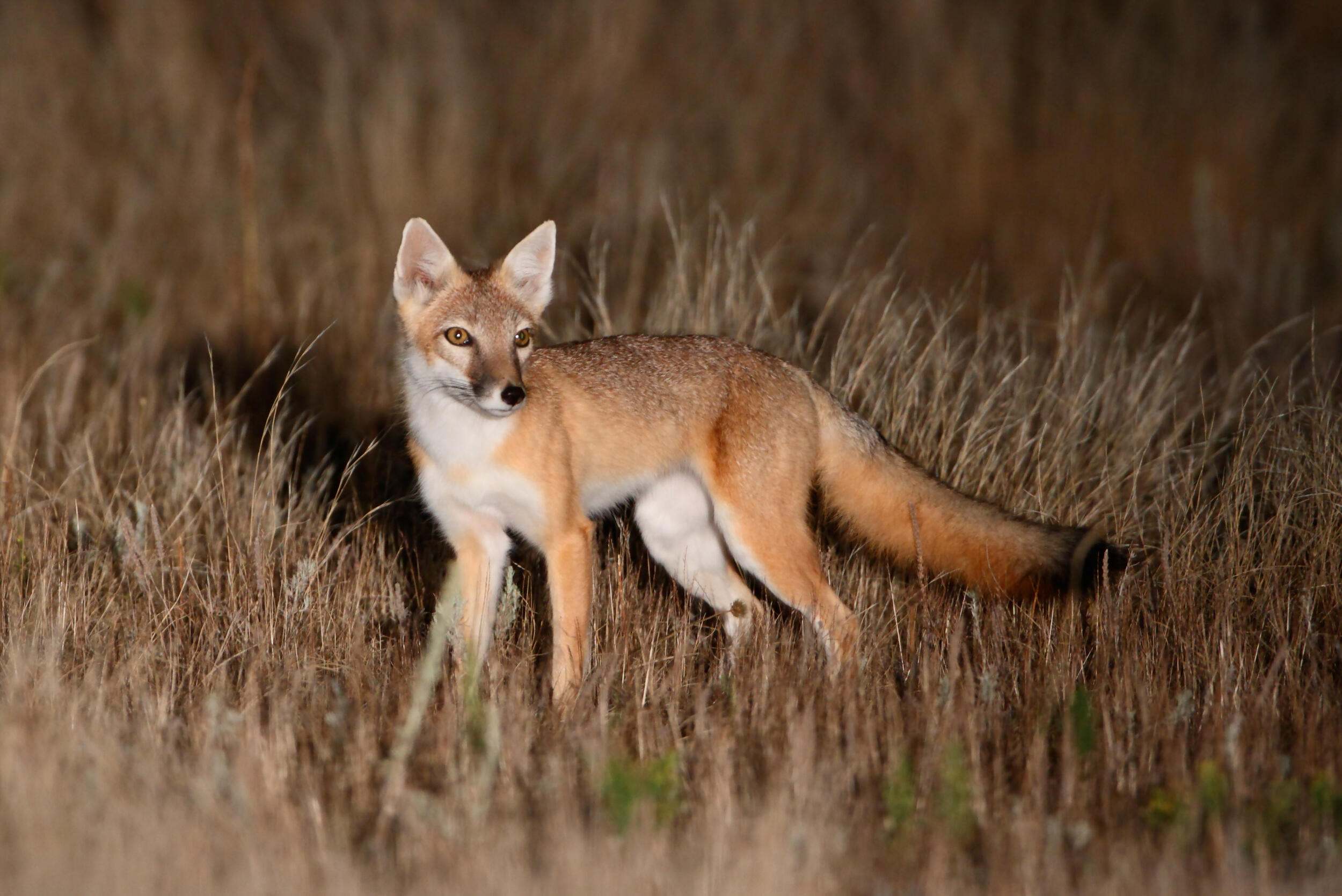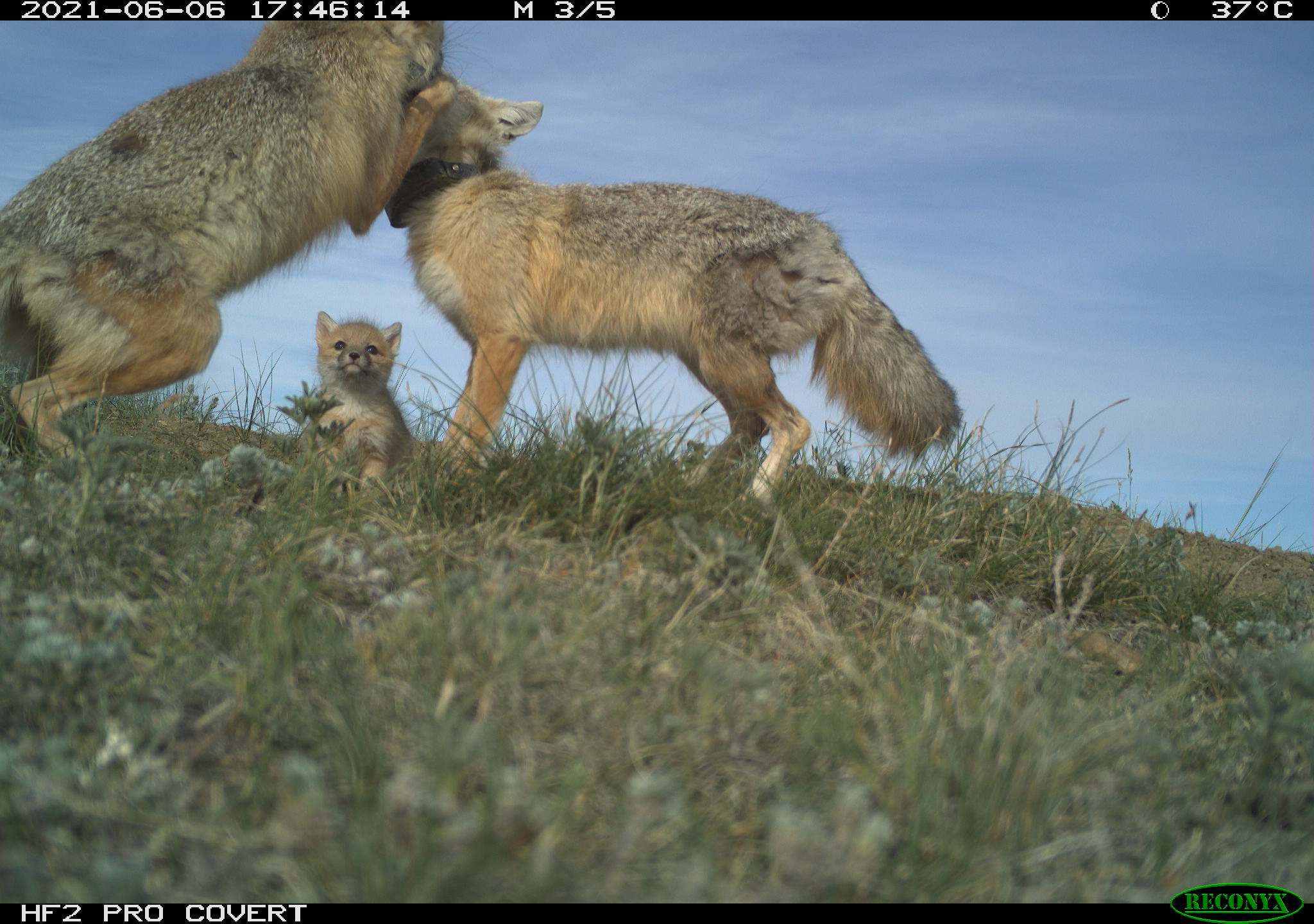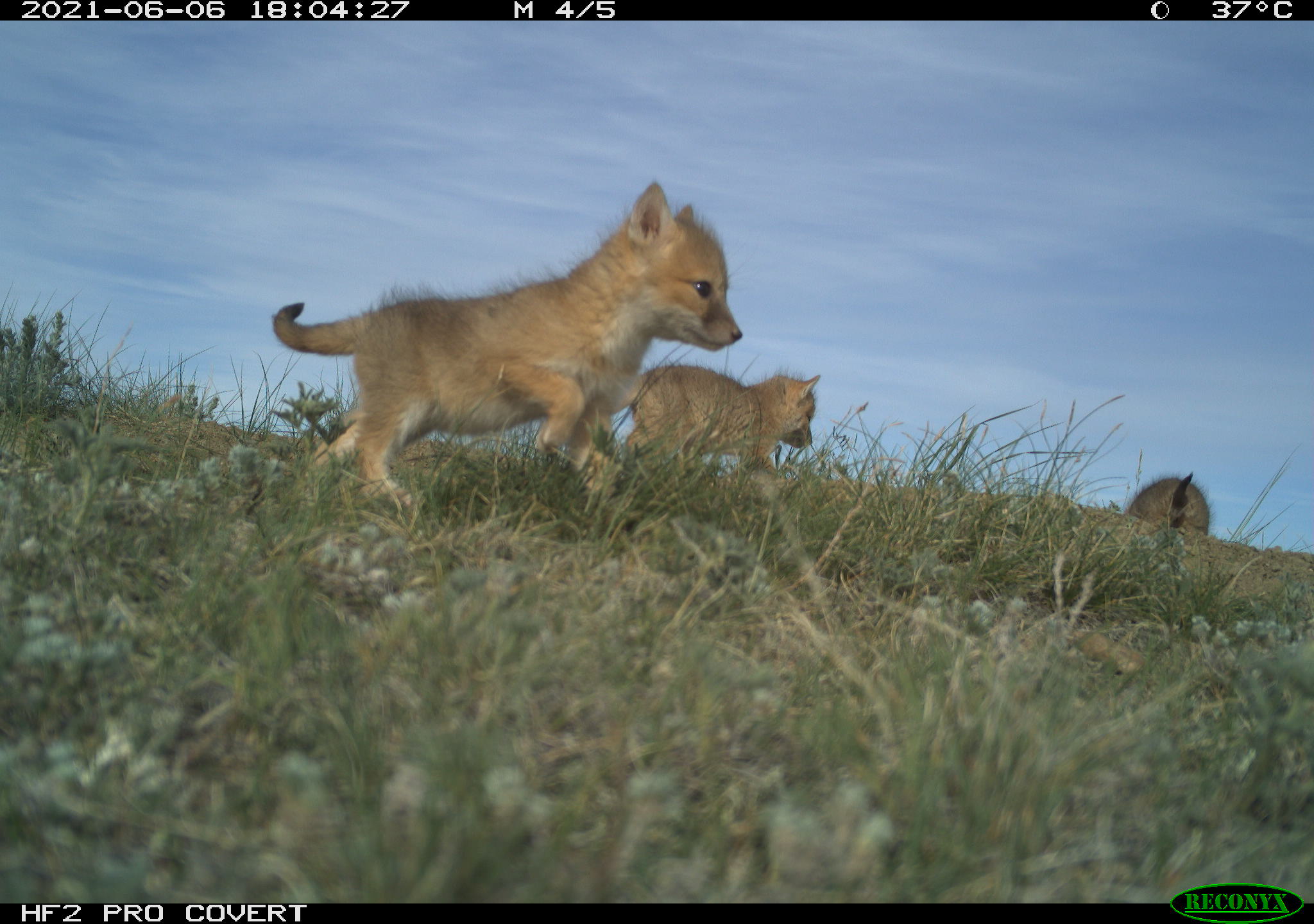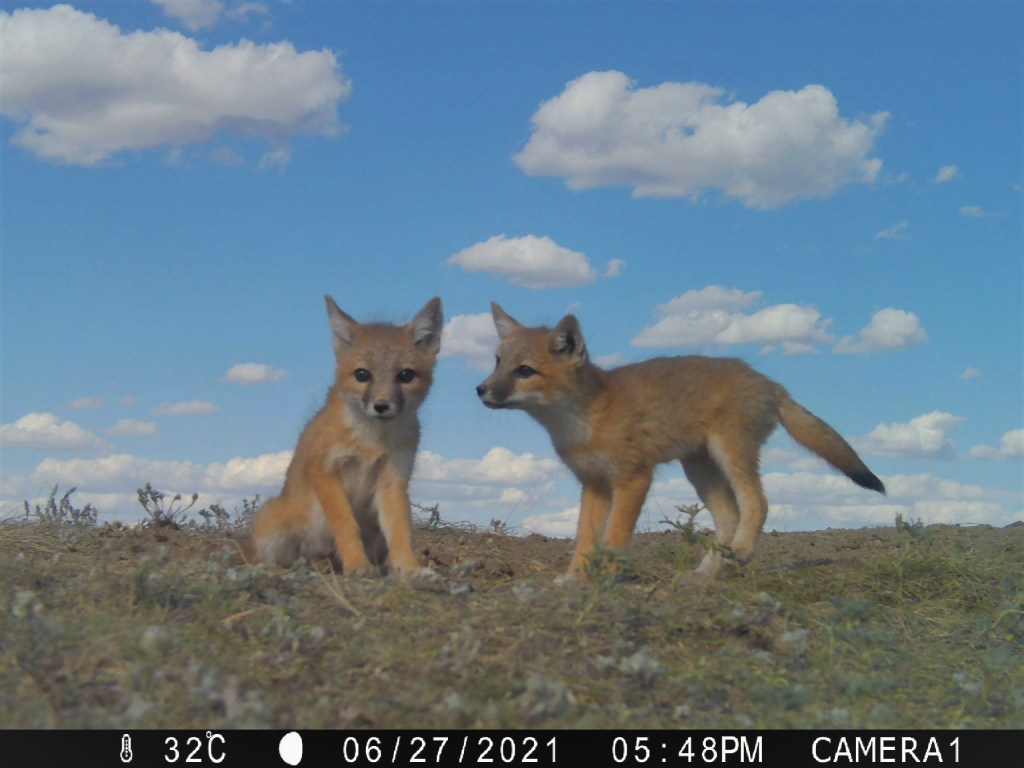Sprinkled throughout the heart of North America lives a canine that weighs less than the average housecat. What the swift fox lacks in size, though, it makes up for in curiosity and speed (it can run up to 35 mph).
But at one point in history, their populations were tanking and the future felt tenuous at best. They faced massive habitat changes as settlers converted prairie grasslands to agricultural fields. They also died in traps and by poison, a byproduct of the campaign against species like coyotes and wolves, their larger, and often more aggressive, canine cousins.
Become a Member
Make a lasting impact for nature when you join The Nature Conservancy!
Now swift foxes are making a bit of a comeback. More individual swift foxes have been reintroduced into former territory than any other canid species, and, as scientists are learning, they may be more resilient than anyone previously understood.
New Research on Swift Foxes
Until relatively recently, scientists believed these foxes existed only in the shortgrass prairie of the Great Plains, an area where they could find plenty of insects, prairie dogs, mice, and other small-mammal munchies and keep a look out for potential predators.

But according to new research, swift foxes don’t require exclusively short-grass prairie to survive. In fact, land managers found a reproducing population of swift foxes in the sagebrush sea outside the central Wyoming town of Lander. And modeling suggests even as the climate continues changing, swift fox range may only expand.
The new sightings and subsequent documentation give swift fox biologists hope that the little critters might not be as imperiled as once believed and may actually be able to continue to adapt to an ever-changing planet.
“It is cool to see a species expanding or findingways to go against what we thought was conventional knowledge,” says Austin Smith, lead author on a new paper documenting their expansion.
And here they are—making it work in an area we weren’t expecting them.
The Cuteness Factor
Swift foxes have a unique designation as one of the few canids on our landscape that are generally well liked.
They’re too small to threaten most livestock or large game, and that same small stature elicits more coos from human observers than fear. They tend to pair bond, forming lifelong monogamous relationships. Dana Nelson, who studied swift foxes as part of her Ph.D. with Clemson University and the Smithsonian Institution, said those pair bonds sometimes go sideways, likening the reporting on collar movement data to reading a soap opera script.

They can also travel remarkable distances of well over 100 miles. And they’re curious.
“If you make a kipping sound with your mouth or suck your teeth, they will come towards you and come pretty close,” Nelson said.
Their curiosity makes them easier to trap and has aided in their reintroductions. They’re also a critical part of a healthy prairie ecosystem, eating small mammals and insects and using prairie dog and badger burrows to den and dive into when facing danger.
Swift Fox Reintroductions on Tribal Lands
Tribes on places like the Fort Belknap Indian Reservation in northern Montana have spent years reintroducing swift foxes onto their land, which is one of the only places in the world that still hosts black-footed ferrets, bison and swift foxes.
And there the tiny foxes thrived, which is in part why Nelson began wondering about their versatility.
Nelson, whose Ph.D. largely revolved around studying those reintroduction efforts, assumed that swift foxes trapped in the scrubland of southern Colorado and the grasslands of Wyoming would try to find habitat similar to where they were born. Instead, she found that regardless of where they were from, they settled in Montana and all behaved similarly.
“We simplistically ended up saying a fox is a fox is a fox,” she says.
But for years, researchers still considered shortgrass prairie as core swift fox habitat. They knew the foxes lived in some mixed habitat, like the edge of where the shortgrass prairie meets the sagebrush sea, says Joe Holbrook, a University of Wyoming zoology professor who co-authored the paper. So it was news to researchers when the population was discovered more than 60 miles away from edge habitat, deep in tall sagebrush.

Swift Foxes Caught on Camera
When land use managers from the Bureau of Land Management (BLM) found swift foxes outside Lander, they called researchers to better understand what it meant. The swift foxes appeared to be reproducing, but how were they making a living somewhere no one thought they could live?
Smith, working with biologists from BLM and the Wyoming Game and Fish Department, put radio telemetry collars on seven swift foxes and set out dozens of camera traps to follow the creatures for a few years.
They found that not only are swift foxes living somewhere new and unexpected, but more than 30% of the sagebrush area they occupied is, in fact, suitable. That means the region likely has food swift foxes need to survive and plenty of burrows needed to dive into for safety from predators.
“The presumption was they need shortgrass prairie to detect predators and escape,” Holbrook explains. “But we’re learning just because it’s a sagebrush sea doesn’t mean swift foxes aren’t there.”
What researchers don’t know, however, is if swift foxes changed the habitat they require, or if are simply recolonizing an area they once occupied.
“It’s hard for me to know what happened in the 1700s and 1800s in westward expansion,” Nelson says. “I don’t know if we had any records of swift fox from those areas, or if this is completely new.”
Hope for Swift Foxes
Either way, Nelson says this helps show that shortgrass prairie may be less of a requirement than food supply and the ability to locate a mate, both of which those swift foxes by Lander were able to find.
The paper comes on the heels of work Nelson co-authored in 2024 that modeled swift fox expansions under climate change scenarios with high and low emissions. In both models, swift fox range kept growing.
“There are certainly some caveats,” Nelson says. “But we do see adaptability in future projection models and this adaptability in behavior in translocations.”
That’s why, as our landscapes face increased development and climate change, the documented adaptability of one of the country’s cutest canids gives their researchers just a little bit more hope.




Never knew about this little fox but I am happy to know that they are just as smart as their big cousins.